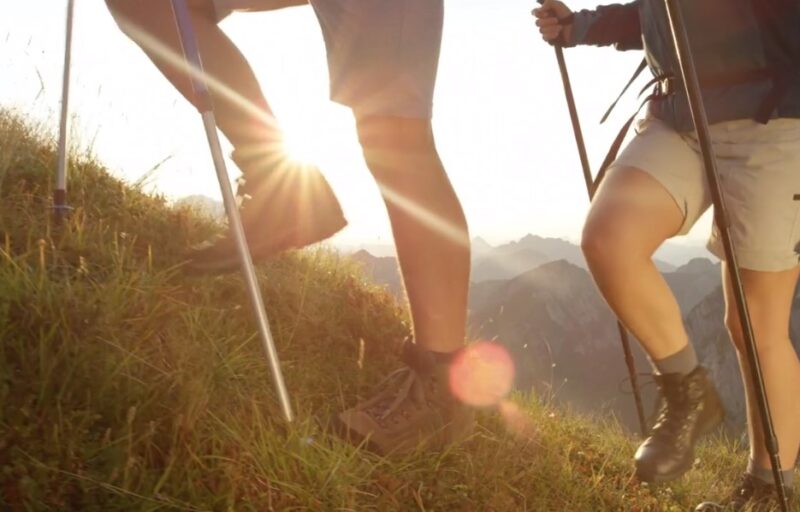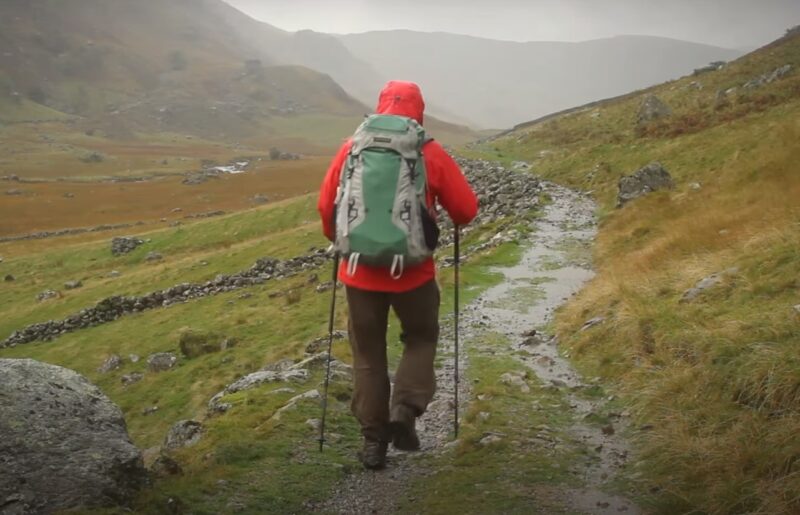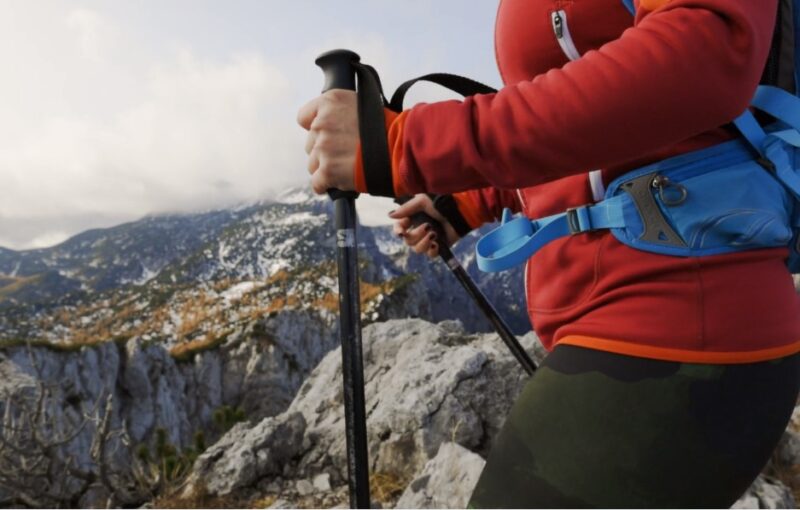Using walking poles can significantly enhance your hiking experience by providing stability, reducing the impact on your joints, and improving your overall endurance. Here’s a detailed guide on how to use them effectively, focusing on technique, body posture, and selection.
Key Takeaways
Technique and Body Posture
Introduce Them Gradually
Like any new gear, introduce walking poles gradually to your routine. Your body, especially your upper body, needs time to adjust to the new movements. Start with short hikes to familiarize yourself with the poles before embarking on longer treks.
This approach helps build muscle memory and comfort with the poles, ensuring they become a natural extension of your body. The goal is to enhance your hike, not to introduce unnecessary strain.
Correct Holding

Grip the handles lightly, with your thumbs and fingers forming an “O” shape. This grip prevents fatigue and ensures you can use the poles for extended periods without discomfort. Make sure your grip is firm enough to control the poles but not so tight that it causes strain on your hands and forearms.
Adjusting your grip based on the terrain can also help; a slightly firmer grip on downhill sections can offer more control. Regularly check your grip to ensure it remains light and effective, especially during long hikes.
Using Straps
Insert your hand upwards through the strap and then grip the handle. This method allows for a looser grip and utilizes the strap for support, reducing hand fatigue. The strap should comfortably wrap around your wrist, providing support without cutting into your skin or feeling too loose.
If you fall, the strap can help you keep hold of your poles, preventing them from getting lost. Adjust the straps before your hike to ensure they fit snugly around your wrists, offering both support and flexibility.
Pole Placement
Plant the pole a little ahead of your step and follow naturally with your feet and body. The movement should be fluid and relaxed, engaging your arms and shoulders without overexertion. Ensure the pole tip lands securely on the ground before transferring your weight onto it.
This technique helps to reduce the impact on your knees, especially when descending. Practice planting your poles at different angles to find the most comfortable and effective position for various types of terrain.
Walking Rhythm
Aim for a natural rhythm, where the pole and the opposite foot hit the ground simultaneously. This coordination engages your whole body in a balanced workout and maintains stability. The consistent rhythm not only aids in efficient energy use but also helps in maintaining a steady pace over different terrains.
If you find your rhythm off, slow down and focus on synchronizing your steps with pole plants until it feels natural again. Listening to the sound of your poles and footsteps can help maintain this rhythm, creating a meditative aspect to your hike.
How to Choose Walking Poles?
When selecting walking poles, consider the following factors to ensure they meet your needs and enhance your hiking experience:
| Aspect | Description |
| Length | The pole should allow your elbow to be at a 90-degree angle when you’re holding the handle. Adjustable poles are versatile for different terrains; shorten them for uphill and lengthen for downhill. |
| Material | Lightweight materials like aluminum or carbon fiber offer a balance between durability and ease of use. Carbon fiber is lighter and absorbs more shock, while aluminum is typically more affordable. |
| Handle Material | Handles made from cork or foam are comfortable for long hikes and absorb sweat, reducing the chance of blisters. Ergonomic shapes can also enhance grip comfort. |
| Strap Quality | Look for poles with adjustable, comfortable straps that can support your wrist and hand, allowing for a relaxed grip. |
| Tip Material | The tip of the pole should provide good traction on various surfaces. Carbide or steel tips are durable and offer grip on ice and rock, while rubber tips are better for softer surfaces or sensitive trails. |
Why Should You Use Them?

- Reduced Impact on Joints: Poles help distribute your body weight, taking pressure off your knees, hips, and ankles, especially when walking downhill.
- Increased Stability: They provide two additional points of contact with the ground, improving balance on uneven terrain and reducing the risk of falls.
- Improved Endurance: By engaging the upper body, poles can help you conserve energy on long hikes, allowing for greater endurance.
- Enhanced Speed: Poles can increase your pace, especially on flat terrain or when descending, by providing additional propulsion.
- Better Posture: Using poles encourages a more upright posture, which can reduce back pain and improve breathing efficiency.
FAQs
Can walking poles be used on all types of terrain?
Yes, walking poles can be used on various terrains, including rocky paths, muddy trails, and even snow-covered routes. The key is to adjust the pole length and use appropriate tips (rubber for hard surfaces, carbide or steel for softer ground) to match the terrain.
How do I adjust walking poles for uphill and downhill sections?
For uphill sections, shorten your poles slightly to maintain efficiency and support. For downhill sections, lengthen the poles to help with balance and reduce strain on your knees. This adjustment helps in leveraging the poles for better support and stability.
Can walking poles improve my hiking speed?
Yes, walking poles can help increase your hiking speed by providing additional propulsion, especially on flat and downhill sections. They also help maintain a consistent rhythm, which can lead to a faster pace over time.
Are there any exercises to improve my technique with walking poles?
Yes, practicing pole planting and rhythm exercises on flat ground can improve your technique. Try walking with exaggerated arm movements to get used to the poles’ weight and feel. Additionally, practicing on a variety of terrains can help you adjust your technique to different conditions.
How often should I replace the tips of my walking poles?
The frequency of replacing pole tips depends on usage and terrain. Regularly inspect the tips for wear and tear. If you notice significant wear or damage, it’s time to replace them. For avid hikers, checking every few months is a good practice.
Is it necessary to use walking poles for short hikes?
While not necessary, using walking poles for short hikes can still offer benefits such as improved posture, reduced joint impact, and practice for longer treks. It’s a personal choice based on comfort, terrain, and individual preferences.
Summary
Incorporating walking poles into your hiking routine can offer a multitude of benefits, from improved stability and reduced joint impact to enhanced speed and endurance.
So, if you’ve had any doubts, wait no more. By selecting the right poles for your needs and mastering the proper technique, you can enjoy a more comfortable and rewarding hiking experience.
